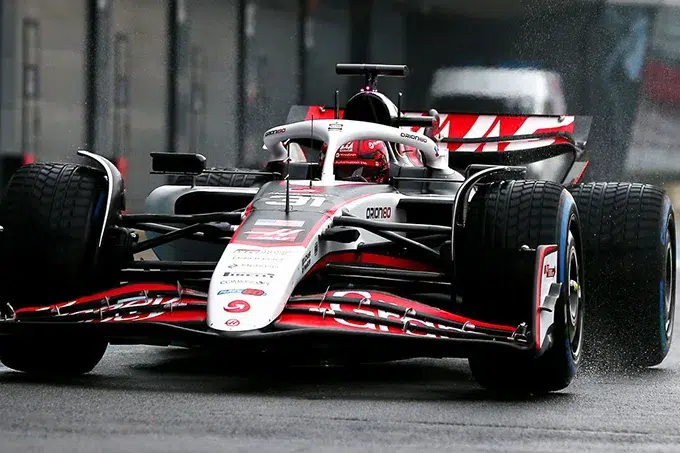Haas F1 has strengthened its resources, translating into key performance gains. The VF-25 embodies this progress, aiming for a competitive leap.
Haas F1 entered a new era last year with the arrival of Ayao Komatsu at the helm. Andrea De Zordo reflected on the 2024 season and the changes within the American team that have enabled its progress.
“The 2024 season was a very long one, but for me, the relationship between the Italian and British headquarters was probably the best aspect of last season,” De Zordo stated. “We are much more in sync, we communicate a lot, and I think this relationship is working well.”
“We have significantly strengthened the design office, we have made major improvements in aerodynamics in terms of methodology and tools. This process started some time ago, and while there is still a lot to do in this area, we are on the right track.”
“On track, the result is excellent. It’s better than we initially expected, and although we didn’t secure sixth place, overall, it was a very good year.”
Haas aerodynamic director Davide Paganelli explained how the team’s atmosphere has evolved:
“Last year, we made great progress in terms of design resources and also gained a lot of confidence in our ability to improve.”
“The atmosphere in the design office today is absolutely positive; we can feel the energy here. Last season, we proved to ourselves and to the rest of the grid that we are capable of delivering excellent work.”
“We consider 2024 a success because we started the season at the bottom of the championship. It was incredibly difficult to achieve something positive with the same resources, but by restructuring the organization, we unlocked the full potential of the team members, and that is truly rewarding.”
De Zordo now explains the changes made to the VF-25 to improve performance:
“The main contribution to performance comes from aerodynamics, so once again, the primary focus has been to progress in this area as much as possible.”
“At the same time, every year, we try to identify an aspect or a quality of the car that isn’t good. So each year, we aim to improve the overall quality of the car by addressing small issues that may seem minor but ultimately enhance the car as a whole.”
“Another important factor we are aware of is that last year, the car had specific limitations, and we have worked specifically to address those issues. We will see the results.”
“Finally, I think it’s fair to say we need to improve our trackside operations. Last year, we weren’t always perfect, and we missed some opportunities. We need to improve in that area as well.”
Paganelli highlights that Haas managed to pinpoint its areas for improvement by identifying and addressing what had cost them performance last season:
“We focused on the weaknesses identified in the VF-24.”
“With the help of the performance team, we worked on the entire car to resolve the issue. As proof, we put a lot of effort into the rear of the car, particularly the rear wing. I believe we have done a very good job in this area for 2025.”
“We think the package we have designed is really strong in terms of development. Of course, we need to verify if the execution meets our expectations. If we can replicate on track what we have observed in the wind tunnel, I believe we could see a significant boost right from the first race.”
“We have tried to design a car capable of adapting to different races, as one of our weaknesses last year was the inability to perform at the same level on circuits with different characteristics.”
“I think we have done a good job in addressing this gap and providing a setup that is better suited for hotter races. We know that at the start of the season, we will face warm conditions, so we should be able to compete.”
The team hopes to improve on last year’s seventh-place finish, but with a tightly packed grid, the challenge will be tough, as De Zordo explains:
“I expect a very, very difficult season— a tight field and strong competition. Every point will be a battle, and we must be perfect. We need to be fully focused from the start and not miss any opportunities, as it will cost us dearly.”
Paganelli points out that the shape of the upcoming season will largely depend on the decisions teams make regarding the 2026 regulations:
“We want to build on what we achieved last year and continue progressing as a team.”
“We need to keep working on the synergy we have developed by collaborating more effectively, preparing for the next major challenge, which comes in the form of the 2026 regulations.”
“It is not yet clear whether teams will push ahead with the current car, but I strongly doubt that any team will give up. I expect the competition to be just as tough and closely contested once again.”
- Discover More>Gualtieri: Why Ferrari’s Reliability Fight Never Ends
- Follow us on >Facebook and >Twitter for F1 updates
Haas F1 Steps Up: VF-25 Marks New Era of Progress Haas F1 Steps Up: VF-25 Marks New Era of Progress Haas F1 Steps Up: VF-25 Marks New Era of Progress
